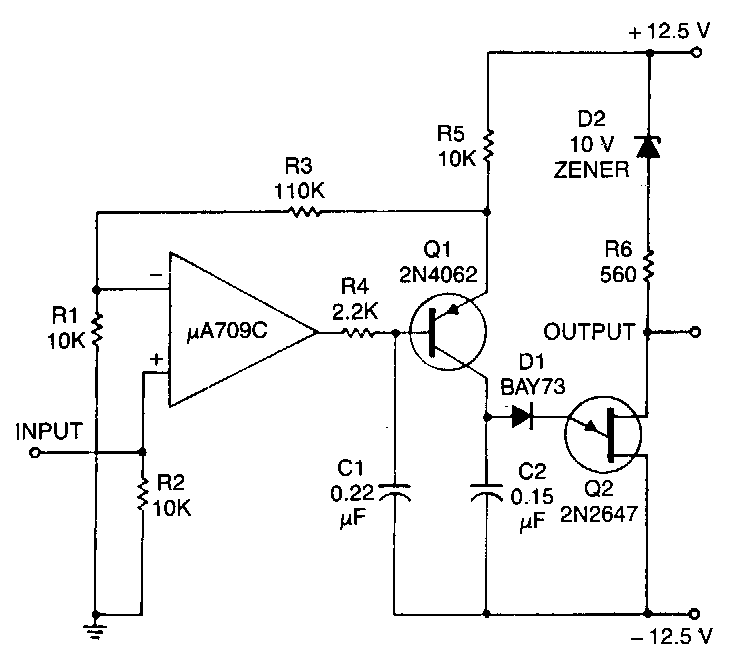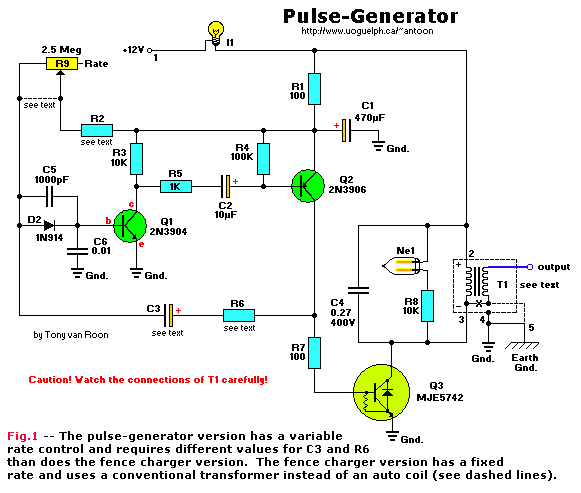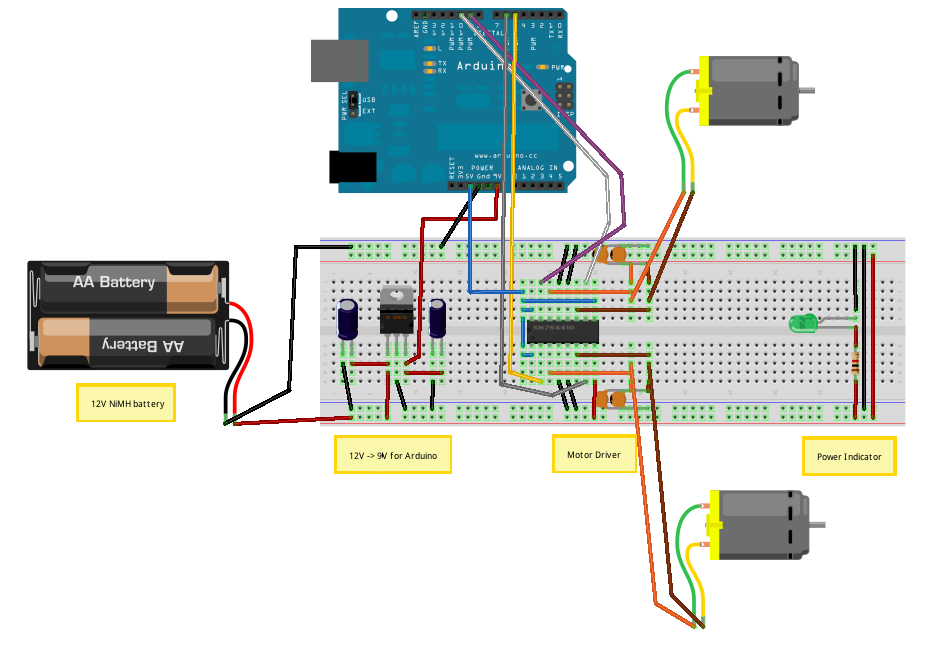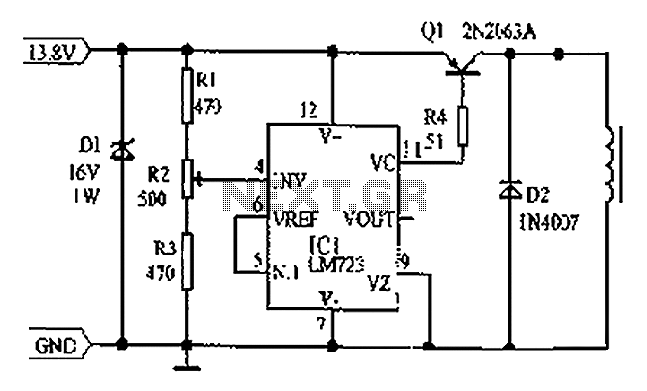
Voltage to-frequency-converter

This circuit consists of a UJT oscillator in which the timing charge capacitor C2 is linearly dependent on the input signal voltage. The charging current is set by the voltage across resistor R5, which is accurately controlled by the amplifier.
The described circuit is a Unijunction Transistor (UJT) oscillator, a type of relaxation oscillator known for its simplicity and effectiveness in generating pulse signals. The UJT operates based on the principle of negative resistance, allowing it to produce oscillations when connected to a charging capacitor and a resistor network.
In this configuration, capacitor C2 plays a crucial role as the timing element. Its charge time is directly influenced by the input signal voltage, which provides a variable timing characteristic. As the input voltage increases, the charging current flowing through resistor R5 also increases, leading to a faster charge time for C2. Conversely, a lower input voltage results in a slower charge time, creating a direct relationship between the input signal and the output frequency of the oscillator.
Resistor R5 is strategically placed in the circuit to regulate the charging current. The voltage across R5 is monitored and controlled by an amplifier, ensuring that the charging process remains stable and predictable. This feedback mechanism allows for precise control over the oscillation frequency and output signal characteristics, making the circuit suitable for various applications such as timers, pulse generators, and frequency modulation.
The UJT oscillator's output can be further refined by integrating additional components, such as filters or amplifiers, depending on the desired application. Overall, this circuit exemplifies a practical approach to generating oscillatory signals with adjustable frequency based on input conditions.This circuit consists of a UJT oscillator in which the timing charge capacitor C2 is linearly dependent on the input sigoal voltage. The charging current is set by the voltage across resistor R5. which is accurately controlled by the amplifier 🔗 External reference
The described circuit is a Unijunction Transistor (UJT) oscillator, a type of relaxation oscillator known for its simplicity and effectiveness in generating pulse signals. The UJT operates based on the principle of negative resistance, allowing it to produce oscillations when connected to a charging capacitor and a resistor network.
In this configuration, capacitor C2 plays a crucial role as the timing element. Its charge time is directly influenced by the input signal voltage, which provides a variable timing characteristic. As the input voltage increases, the charging current flowing through resistor R5 also increases, leading to a faster charge time for C2. Conversely, a lower input voltage results in a slower charge time, creating a direct relationship between the input signal and the output frequency of the oscillator.
Resistor R5 is strategically placed in the circuit to regulate the charging current. The voltage across R5 is monitored and controlled by an amplifier, ensuring that the charging process remains stable and predictable. This feedback mechanism allows for precise control over the oscillation frequency and output signal characteristics, making the circuit suitable for various applications such as timers, pulse generators, and frequency modulation.
The UJT oscillator's output can be further refined by integrating additional components, such as filters or amplifiers, depending on the desired application. Overall, this circuit exemplifies a practical approach to generating oscillatory signals with adjustable frequency based on input conditions.This circuit consists of a UJT oscillator in which the timing charge capacitor C2 is linearly dependent on the input sigoal voltage. The charging current is set by the voltage across resistor R5. which is accurately controlled by the amplifier 🔗 External reference
Warning: include(partials/cookie-banner.php): Failed to open stream: Permission denied in /var/www/html/nextgr/view-circuit.php on line 713
Warning: include(): Failed opening 'partials/cookie-banner.php' for inclusion (include_path='.:/usr/share/php') in /var/www/html/nextgr/view-circuit.php on line 713





